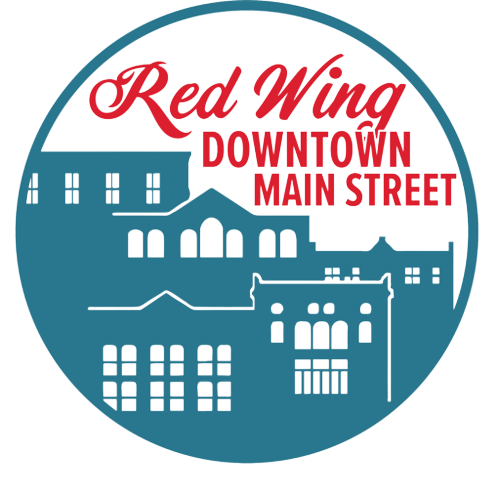Webster Livery Stable
An earlier Webster Livery, showing that the archway was large enough for a horse and rider to pass through
Built: 1882
Architectural Style: Late 19th Century Commercial
Architect/Builder: Unknown
Currently: Rivertown Games/Struss Optical/ Clay and Creative Arts Center
In 1902, John H. Rich owned the first car in Red Wing. The railroad didn’t make it to town until 1870, and the river travel that brought early white settlers wasn’t available during the frozen winter months. That meant local citizens and businesses often relied on horse-drawn stagecoaches.
Red Wing fell between the major hubs of St. Paul and La Crosse, and in 1868, three different stage lines ran through the city each day. By 1873, Red Wing had consistent routes that passed through different towns on their way to Oronoco, Northfield, Fairbault, and across the river in Maiden Rock.
In its early years, the fire department relied on horse-drawn carts, and the late 1870s saw a short-lived ferry to Wisconsin powered by a horse on a treadmill.
But horses were used for more than just labor. In the 1860s a horse-drawn sleigh would carry paying customers along the frozen Mississippi to Lake City and back. And according to an 1881 ad for a town fair, there were “$1,500 In Prizes for Exhibitions of Speed by Trotting and Running Horses,” including a ten mile race.
As a result, the businesses around horses flourished. Multiple wagon, carriage, and buggy makers operated in town. House painters would offer their services to wagon makers, and blacksmiths would fashion both horseshoes and much of the metal required for carriages. Saddle and harness makers–likely using leather tanned by S.B. Foot–grew in numbers as well.
Liveries were another common operation, stabling horses, and renting steeds to those looking for transportation. The Red Wing Heritage Preservation Commission found records of 11 liveries operating at one time.
Horses and carts were a common sight in Red Wing’s early years
This specific livery was built by William Leonard Webster in 1882. Webster’s previous livery on this site burned down on Easter of 1882 after a fire started in an adjacent tailor shop and destroyed 17 buildings, including another livery and the Turner Opera House. The Opera House, which stood where the library now stands, was Red Wing’s entertainment hub at the time.
But the new building has stood ever since, and serves as a great example of the capabilities of limestone construction, especially the center archway, which is tall enough to be ridden through on horseback.
Once the automobile arrived in Red Wing, the need for horses dwindled. The liveries and saddle makers were replaced by garages and tire shops, and Third Street is now lined with parking spots rather than hitching posts.


